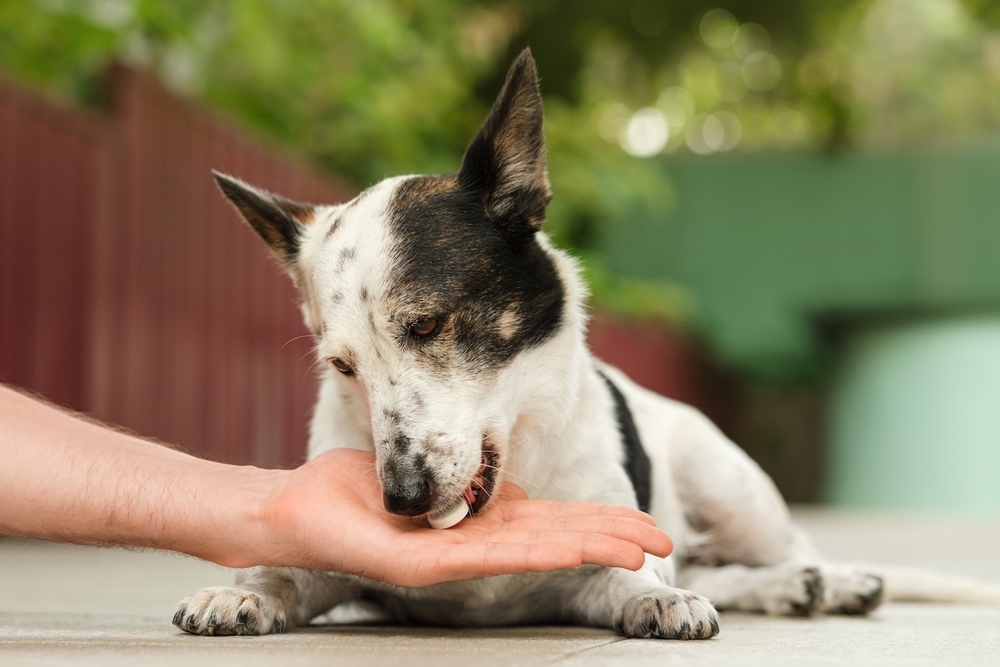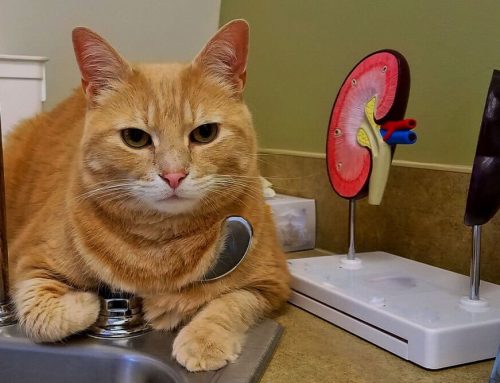Medications are often necessary to relieve pets’ pain and treat their infections and illnesses. Unfortunately, your four-legged friend doesn’t understand medications’ importance to their health. Cats and dogs sometimes refuse medications or spit them out. You are not alone if your pet is medication-resistant. To make your job easier and to help your pet feel less stressed during the medication administration process, follow our MountainView Veterinary Hospital team’s nine pro tips for successful pet medication sessions.
#1: Consult with one of our veterinarians
When one of our veterinarians prescribes medication for your pet, they explain the dosage, proper storage, and frequency. Always follow the medication instructions for the safest results. Some medicines cannot be crushed or diluted in water or food, while others can. We explain everything you need to know so you are well-equipped to administer your pet’s medication.
#2: Use pet pill pockets for pills or capsules
A pill pocket is a tasty treat with a hollow center in which you can hide a pill or capsule. Many pets eagerly gobble up the treat without realizing medication is hidden inside. Pill pockets come in various flavors to suit different taste preferences and are often the easiest method for administering pills or capsules to pets.
#3: Hide medication in pet food
If your pet’s medication can be taken with food or crushed, consider disguising it in your four-legged friend’s food. Hide the medication in a small amount of your furry pal’s favorite food such as:
- Rolled-up deli meat
- A dollop of xylitol-free peanut butter
- A small amount of cream cheese
- A tablespoon of plain mashed sweet potato
- A small piece of sliced cheese
- A dollop of unsweetened pumpkin puree
#4: Dissolve your pet’s meds in water
If your pet refuses to swallow pills, ask our veterinarian if it’s safe to crush the medication and mix it with a small amount of water or broth. Be sure to administer the entire mixture to ensure your pet receives the total dose. Use minimal water or broth so your pet ingests the medication entirely.
#5: Use a pet pill popper
Pill poppers—or pillers—are devices designed to safely administer pills to pets without causing discomfort. They allow you to place the piller in the back of your pet’s mouth and quickly release the pill with the plunger. Administering your pet’s pill using a piller allows you to dispense the pill and avoid an accidental bite.
#6: Create a positive association with pet medication
After successfully giving your pet their medication, reward them with a special treat or praise. Positive reinforcement can make the experience enjoyable for your pet and increase their cooperation in the future. By consistently using positive reinforcement while giving your furry pal their meds, they learn to associate this task with treats, food, affection, and other things they enjoy.
#7: Safely use topical pet medications
Some pet medications are applied directly to the skin. For topicals, wear disposable gloves to avoid contact with the medication when you are applying it to your pet’s skin. Apply the topical according to our veterinarian’s instructions and wait for the spray or ointment to fully absorb into your pet’s skin before they wander off. Use an e-collar on your furry pal if they attempt to lick off the medication.
#8: Ask for a liquid pet medication formulation
Liquid medications can be easier than pills or capsules to administer to pets, especially if they have difficulty swallowing pills or refuse to swallow them. A liquid medication can allow you to give your pet the precise dosage through a syringe or dropper. You can easily dispense the drug directly into your pet’s mouth, aiming for the inside cheek, toward the back of their mouth rather than the throat. This method prevents discomfort or choking.
#9: Remain patient and calm with your pet

Your four-legged friend is attuned to your emotions. If you remain relaxed when administering their medications, they are likely to stay at ease. You can help prevent your pet from becoming anxious or resistant by staying calm and maintaining a positive, reassuring voice tone as well.
Giving your pet medication may seem daunting initially. Still, with patience, practice, and the proper techniques, you can make the process easier and less stressful for yourself and your furry companion. By following our pro tips, you help ensure your pet receives the medication they need to stay happy and healthy. Consult with our MountainView Veterinary Hospital team for personalized advice and guidance tailored to your pet’s specific medication needs.









Leave A Comment